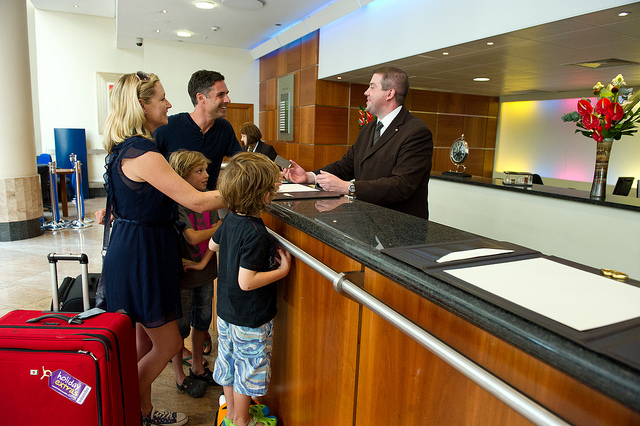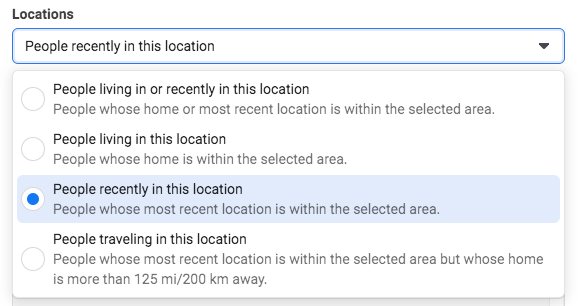Marketing Strategies for Hotels with High Occupancy
by Jeremy Razook
Congratulations! If you’re reading this, business must be booming. Pat yourself on the back, pour yourself a drink and get back to work.
No, that’s not a typo.
While celebration may be in order, that flashing ‘No Vacancy’ sign is no excuse to freeze your marketing efforts.
If you want to maximize your success, here are 8 marketing strategies hotels with high occupancy can start implementing today:
1. Build relationships with your current guests

Your most important guest is your current guest. That’s because when you create a positive, unforgettable experience for your current guests, chances are they’ll turn into repeat guests.
It all starts with the post-booking email and continues well after your guests have left your hotel. Using your CRM data, you should be able to further personalize your messaging and the overall hotel experience.
Whether it’s surprising your younger guests with treats, offering complimentary drinks at check-in, or just listening and responding to questions and needs, making a strong first impression can lead to a consumer-to-business relationship that lasts for years to come.
2. Push for revenue through add-ons and on-site purchases
Get the most out of guests already on the books through incremental revenue channels.
This could be through add-ons like a bottle of wine or basket of snacks in the room after check-in, food or arcade credits, or discounted tickets to nearby attractions available only through your hotel.
You could push for additional food and beverage revenue by offering a coupon to your on-site dining outlets. Or offer discounted rates for your hotel’s paid services, whether that’s yoga classes, beach chair rentals, or hiking tours.
If offering discounts and coupons just aren’t an option, at least be sure you’re mentioning these services in your marketing efforts so guests know they’re available. Whether it’s a callout in a paid search ad or a banner on your homepage, getting the word out will generate awareness of these additional revenue channels.
If you’re having trouble filling your most expensive rooms, consider upselling to the right guest and throw in an extra perk to make the upsell even more appealing.
3. Pivot your paid search bidding strategy

You’ve focused on getting as many bookings as possible. But a higher occupancy rate may lead to fewer bookings now at a lower value per booking.
Switching your Google Ads hotel paid search campaigns to a Maximize Conversion Value bidding strategy will aim to drive as much revenue as possible within your budget by potentially serving your ads to higher-yielding customers.
Plus, if you’re noticing that your more expensive rooms are still sitting empty, it may be time to pivot to a Maximize Conversion Value bidding strategy. Now your ads could potentially serve to people that are more likely to book your most expensive room types.
You can easily make this switch within your Google Ads campaign settings. From there, monitor your performance over the next month and compare performance to before you made the switch to see if Maximize Conversion Value bidding has worked for you.
4. Look ahead to periods of low occupancy
Are you noticing empty rooms towards the end of summer? Do you have availability during the fall foliage season? What about vacancies around an upcoming event or festival?
Now is the time to identify periods where occupancy may be lower and make a concerted effort to fill those dates with hyper-targeted campaigns. Influence prospective guests to book during these periods through ad copy messaging, website messaging, imagery, blog articles, and hotel deals themed to specific dates, seasons, or holidays.
If you’re a family hotel with plenty of vacancies near the end of the summer, consider an end-of-summer special or back-to-school deal for local families or families in nearby locations that are within driving distance for one last summer hurrah.
Or if there’s an upcoming business conference that will be hosted near your hotel, adjust your marketing to promote business traveler-friendly amenities like dedicated workspaces and complimentary in-room WiFi, along with a food credit to the on-site coffee shop.
5. Build demand for down the road
Get the word out now for higher occupancy later. The idea here is to increase general awareness of and demand for your property by introducing your hotel to a new audience of people.
Use the knowledge of your typical hotel guests, like where they travel from and common age groups, to reach these groups through channels like Google’s Display Network and Facebook’s Reach and Awareness campaign objectives.
Because you won’t necessarily be looking to directly build your guest list with this strategy, we recommend looking at specific metrics, like Google Trends data and natural search performance, that will indicate whether these campaigns have been successful.
Get more information on how to analyze demand generation campaigns.
6. Reach travelers that stayed in your area but didn’t stay at your hotel

Thanks to Facebook Ads, we can combine the unfamiliarity of an awareness campaign with the familiarity of a remarketing campaign. In this case, people may be unfamiliar with your hotel but they are familiar with your hotel’s location. And Facebook Ads makes this strategy incredibly easy to implement.
In your ad set settings, set your location targeting to your area and adjust your geo-targeting settings to “People just recently in your location” and exclude your page fans and your past guests. Now you can introduce your property to fresh faces that are already familiar with your area.
From there, based on the creative you choose, you could retarget people based on the amount of time they watched your video or whether they directly interacted with your ads.
7. Minimize availability for high-commission channels
No need to spend more where you don’t need to. Reducing your efforts on OTA sites now can likely help you save money down the road.
Instead, prioritize for more direct bookings using avenues like branded paid search campaigns, website conversion optimization, and participating in Google Hotel Ads.
If your hotel offers a Best Rate Guarantee, make sure your website reflects that with callouts, the lowest prices on your booking engine, exclusive direct booking deals and perks, and additional information about price matching OTAs.
You’ll also want to make sure your paid search channels are promoting similar messaging in your ad headlines, descriptions, and ad extensions.
8. Market to your most profitable guests
Whether your most profitable guests are business travelers, families, or groups, adjust your marketing strategy to prioritize your efforts to the travelers that are likely to spend more at your hotel.
Using past customer data, you should be able to identify the group(s) of people that typically spend more at your property. Use this knowledge to build out campaigns across multiple channels that target these demographics.
For example, if your highest value guest is families, you could perform keyword research around “family hotels” or “kid-friendly hotels” appended with your location. If search volume exists for those terms, build out a paid search campaign in Google Ads to serve ads to folks searching these terms specifically.
Business is booming. But is it TravelBoom-ing? Puns aside, contact us today to make sure your hotel marketing strategies are set up to succeed now and in the future.